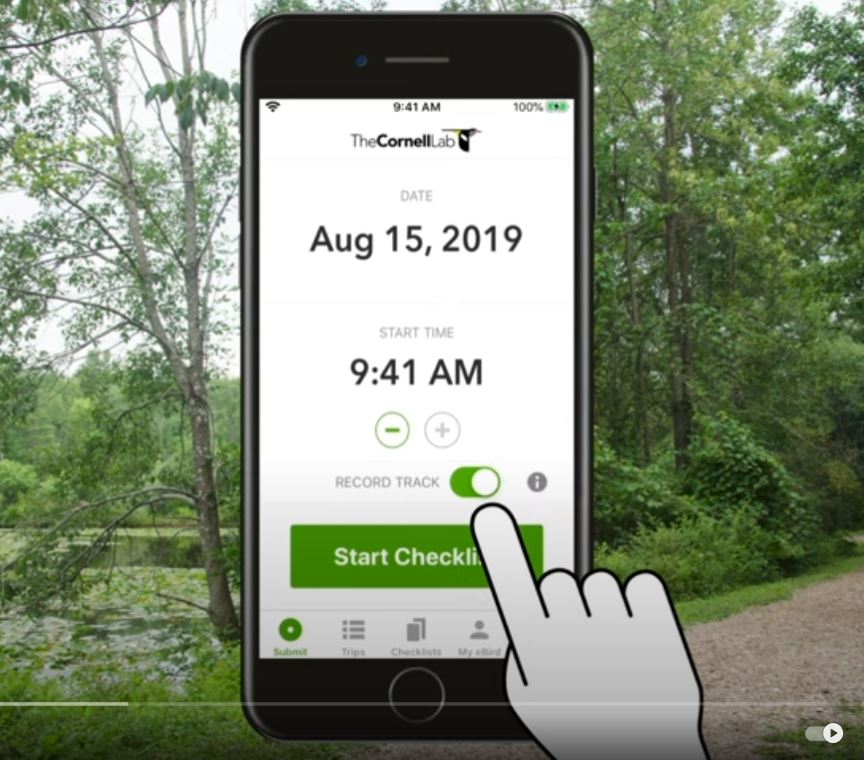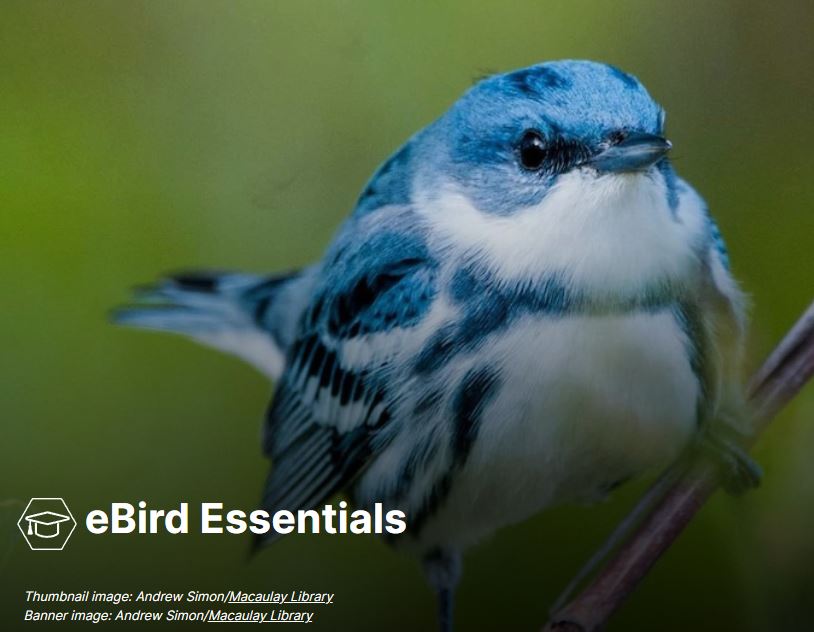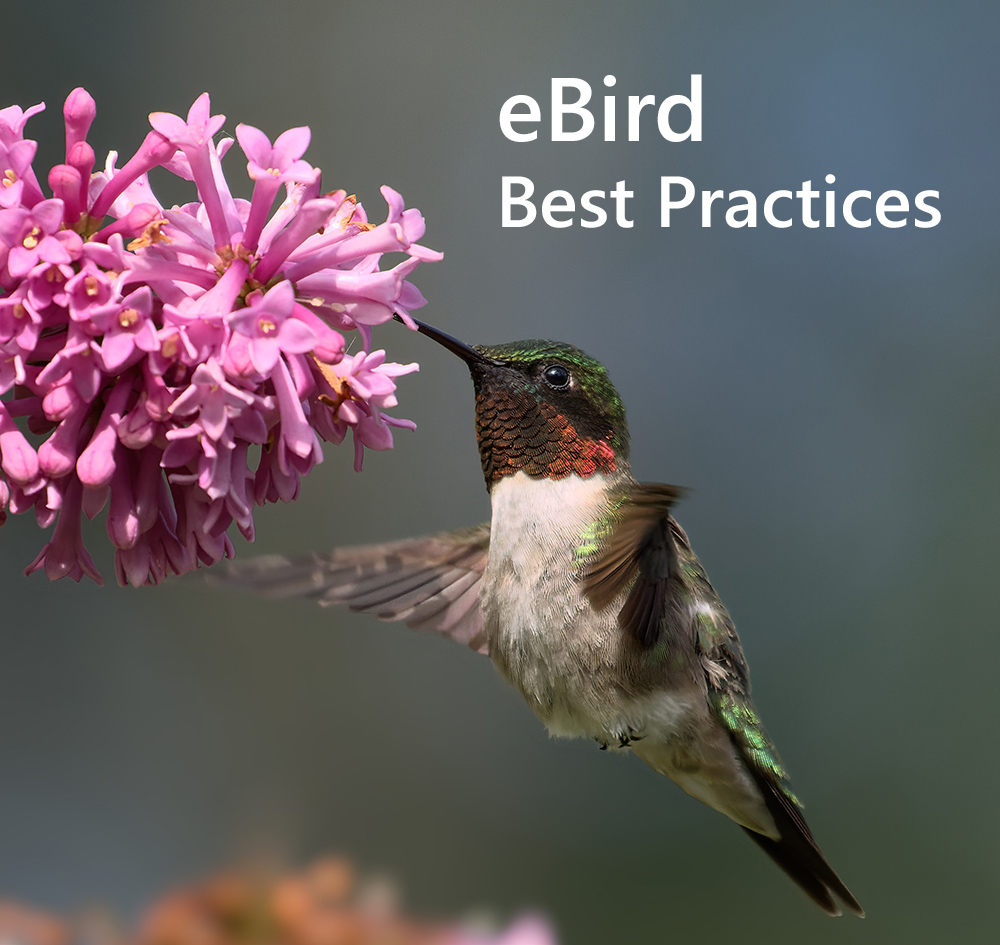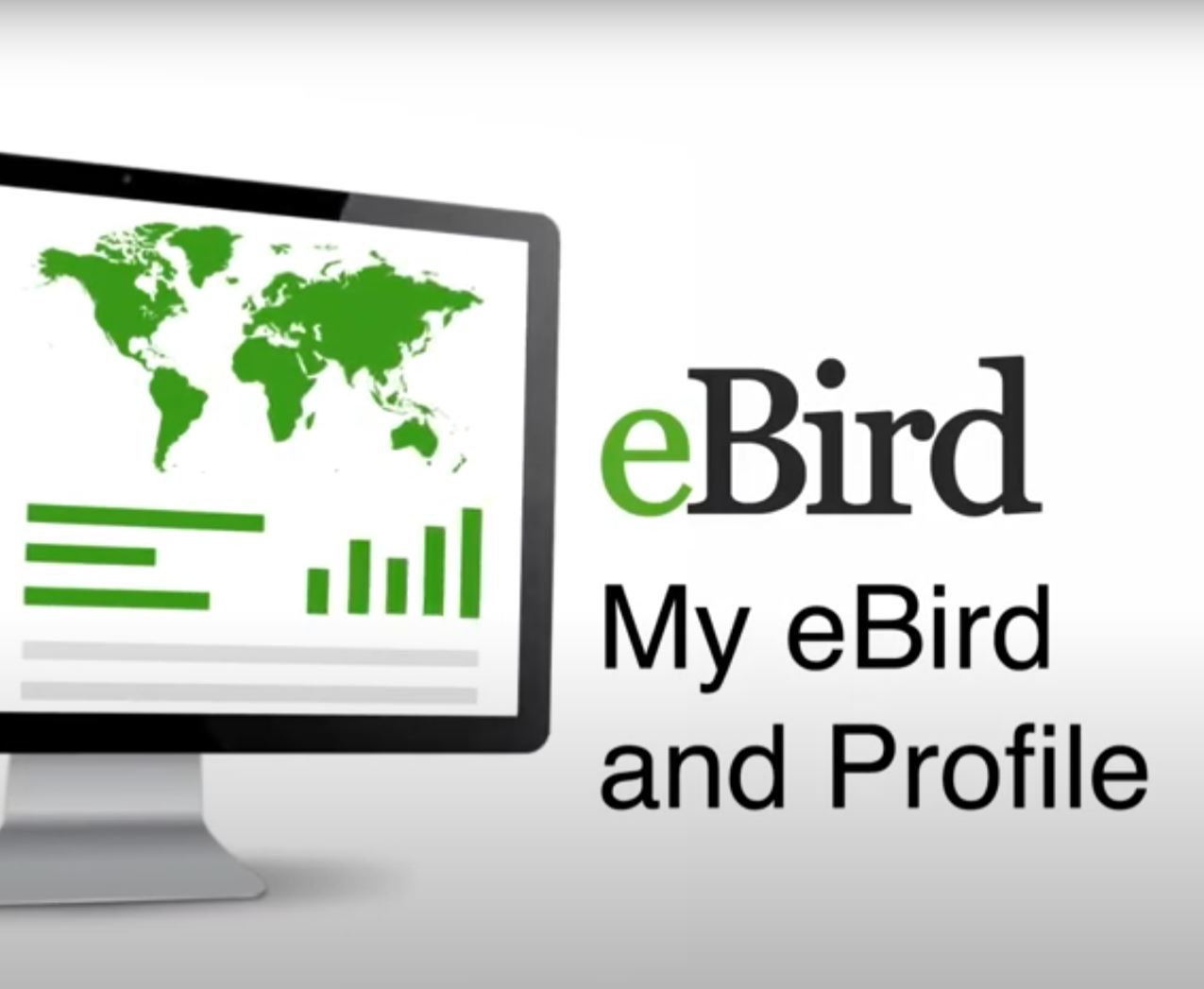eBird
eBird was created by Cornell Lab of Ornithology for the purpose of supporting both birders and bird conservation. There are now more than 700,000 eBird users, and these individuals have contributed over 80 million checklists, tallying 1.1 billion bird observations.
eBird takes the traditional checklist approach used by birders and ports it to a smartphone app. A checklist is a record of the birds you’ve observed on an outing. eBird automatically adds the time, location, duration, and distance travelled while birding. eBird works anywhere in the world, even in areas without cellphone coverage (in which case checklists are stored and later uploaded using a WiFi connection ).
The Benefits of Using eBird
1. Contribute to Science and Conservation. Birding is a wonderful hobby and a great way to get out and enjoy nature. But sadly, many of the species we love to watch are in decline. Therefore, we all need to do what we can to support conservation, and eBird is a great way to do that. Your observations add to a rapidly growing global database that scientists and wildlife managers are increasingly drawing on to inform their work. For example, the Cornell Lab, which runs eBird, conducts detailed analysis of the database and produces valuable maps and data products on bird distribution, abundance, and migratory behaviour. Hundreds of research papers using eBird data have been published in the scientific literature. To learn more about citizen science and how you can participate, check out our citizen science page.
2. Keep Track of Your Lists. eBird takes the traditional checklist approach used by birders and ports it to a smartphone app. Therefore, it is an easy and natural way of recording observations, even in areas without cellphone coverage (the app works fine offline). You can even upload photos or audio recordings to your list. And the information can never be lost or misplaced. When you want to review what you’ve seen, eBird makes it easy to display your entire life list, recent outings, specific locations, basically whatever you want. eBird also makes it easy to share information with others, including sharing checklists. It also deals with taxonomic updates, which keeps everything up to date.
3. Improve Your Birding Skills. The eBird database provides a treasure trove of information on birds. The Cornell Lab provides free access to this information through multiple platforms. The All About Birds website provides detailed information on the natural history and identification of birds. The eBird website provides access to submitted bird checklists, searchable by location and date. This site also provides a variety of data products, including species distribution and abundance maps. The Macaulay Library maintains a massive archive of bird photos and sounds.
In the field, the eBird app will present you with a seasonally appropriate list of species for the region and time of year. If you find something less expected, you’ll be prompted to provide some details, such as photos and sounds to document your sighting. The Cornell lab has also developed the Merlin smartphone app to assist with bird identification in the field, using AI algorithms based on the eBird database.
4. Plan Your Trips. The eBird website provides a host of features to help plan your birding outings. With the “Explore Regions” feature, you can observe all the recent sightings in a specific location. You can also use the “Hotspots” tab to see the most active birding locations in a region. If you are interested in finding specific species, the “Explore Species” feature has you covered. Users also have the ability to set up automated emails from eBird for rare bird alerts.
5. Connect with Other Birders. Information sharing is central to eBird. For example, if you are birding with a friend, you can share a checklist. You can also peruse the checklists of others on eBird to see who the active birders are in your area and what they are seeing. Participating with eBird is like being in the world’s biggest bird club—open to all, helpful to all, and generous in spirit with few exceptions.
Getting Started with eBird
To begin using eBird you'll need to set up an account, which you can do on the eBird website. Be assured that eBird will not pester you with email spam. You'll also need to download the eBird app for your phone from iTunes or Google.
If you are new to eBird, there is a 4-minute video tutorial to get you going. If you want additional guidance, the Cornell Lab offers a free online course called eBird Essentials. The Best Practices section of the eBird website also provides lots of useful information.
Reviewing Your Observations
The My eBird section of the eBird website provides a summary of all your birding observations. Clicking on the "Species Observed" section provides a list of all the species you have seen (your life list) and allows you to filter your observations by species, date, and location.
Clicking on the "Checklists" item along the left side of the page brings up a list of all your submitted checklists in chronological order. These lists can be filtered by location and date. Selecting an individual checklist allows you to view the individual observations. Use the "Checklist Tools" button at the top right to edit the checklist or to download it to your computer.
For more information about My eBird, view the video tutorial.




